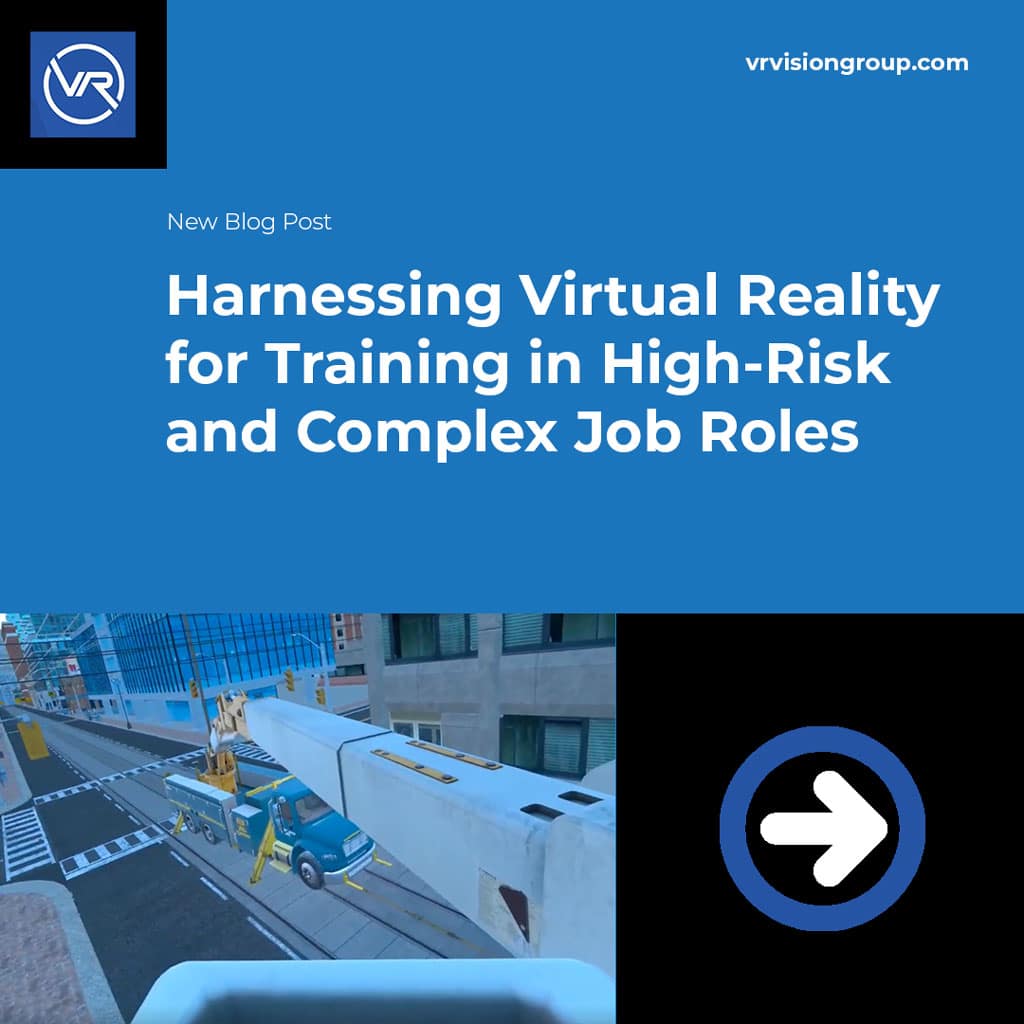Harnessing Virtual Reality for Training in High-Risk and Complex Job Roles

In today’s fast-evolving workplace, training employees for high-risk and complex job roles presents unique challenges. Traditional training methods often fall short in safely and effectively preparing workers for such demanding environments. This is where virtual reality for training steps in as a game-changer, offering an innovative and practical solution for training in dangerous or intricate job roles. Let’s explore how VR is revolutionizing training methodologies across various industries. 1. Understanding VR in Training Virtual reality training immerses the user in a simulated, interactive 3D environment. Using VR headsets and sometimes additional equipment like haptic gloves (Haptx we’re looking at you), trainees can experience realistic scenarios without the risks associated with real-world training. This technology not only ensures safety but also enhances learning outcomes through immersive experiences. VR is opening the door for a new paradigm shift in the way we train, and for many job roles that have an inherent risk associated, this means increased efficacy and a reduction in workplace injury or incident. 2. VR Training in High-Risk Industries Aviation and Aerospace In the aviation sector, pilots use VR for flight simulation training, and this has long been the case. Things are evolving at a rapid pace, however, and nowadays you can essentially have a 1-to-1 recreation of the real-world plane to learn the ropes on. This method allows pilots to experience different flight situations, emergency procedures, and weather conditions in a controlled, risk-free environment. A notable example is the VR training program for Airbus pilots, which immerses them in realistic cockpit simulations, providing hands-on experience without the need for actual flight hours. Healthcare Another area making headway with immersive learning is the healthcare sector where surgeons and medical professionals utilize VR to practice complex surgical procedures. This approach provides a safe environment to make and learn from mistakes without putting patients at risk. For instance, VR simulations enable neurosurgeons to practice intricate brain surgeries, enhancing their skills and precision. We can expect to see this sector increase in usage and function in 2024 as various VR hardware improves its quality and pixel density, as well as the advent of systems like Apple’s Vision Pro coming to market. Emergency Response and Military Firefighters and emergency responders use VR to simulate critical situations like fire outbreaks, natural disasters, and hazardous material spills. Military personnel also train in VR environments to prepare for combat scenarios, improving their tactical skills and decision-making abilities under pressure. Heavy Machinery Operation Operators of heavy machinery, such as cranes, excavators, and forklifts, benefit from VR training by getting accustomed to the machinery’s controls and operations in a safe setting. This reduces accidents and equipment damage during real-world operations. Here at VR Vision, we’ve done quite a few simulations for clients that range from crane operation to electric forklift maintenance and repair tasks that give trainees the ability to operate a digital twin of the real world to gain powerful insights into the usage and function of their lifelike counterparts. Energy Sector In the energy industry, particularly in oil and gas, VR training simulates scenarios like drilling operations and handling of high-pressure systems. This method effectively trains workers in safety protocols and emergency responses to potential on-site accidents. VR is also being used in the electrical utilities segment, as in our collaboration with Toronto Hydro, VR training modules were developed to simulate scenarios such as electrical installations and repairs. This training allows workers to navigate and interact with high-voltage environments safely, understanding the risks and learning the correct procedures without the danger of actual exposure. These VR scenarios can include recognizing and responding to hazards like live wires, transformer malfunctions, and other electrical risks. 3. The Advantages of VR Training Risk Reduction: VR eliminates the dangers associated with training for high-risk job roles. Enhanced Learning Retention: The immersive nature of VR leads to better retention of information and skills. Cost-Effective: VR reduces the need for physical resources, locations, and equipment. Scalability: VR can train multiple individuals simultaneously, irrespective of their geographical locations. Real-Time Feedback: Trainees receive immediate feedback on their actions, facilitating rapid learning and improvement. 4. Real-World Examples of Successful VR Training Avangrid Renewables: They implemented a VR training program for turbine maintenance and repair, leading to a net zero incident rate and significant savings in annual costs. The full case study with Avangrid sheds further light on this. Healthcare Training: A medical institution used VR to train surgeons for complex procedures, resulting in enhanced precision and lower patient risk. Military Simulation: An army unit employed VR for combat training, significantly improving soldiers’ situational awareness and decision-making skills. 5. Overcoming Challenges Despite its benefits, VR training faces challenges such as high initial development costs, technological accessibility, and the need for specialized hardware. However, with advancing technology and decreasing costs, these barriers are gradually diminishing. We’ve found that adopting a modular approach to VR content development allows for the reuse of assets and scenarios across different training modules, reducing overall costs and significantly increasing the time to value. 6. Looking to the Future The future of VR in training is promising, with potential advancements like augmented and mixed reality integrations, more realistic haptic feedback, hand tracking, and even AI-driven personalized training scenarios. As VR technology evolves, it will continue to transform training methodologies, especially for high-risk and complex job roles. Conclusion Virtual reality is reshaping the landscape of training in various industries, particularly where risk and complexity are high. By offering safe, realistic, and engaging training environments, VR is not just an alternative but a necessary evolution in training methodologies. As we move forward, embracing VR in training will be crucial for organizations aiming to enhance the skills and safety of their workforce in challenging job roles.




